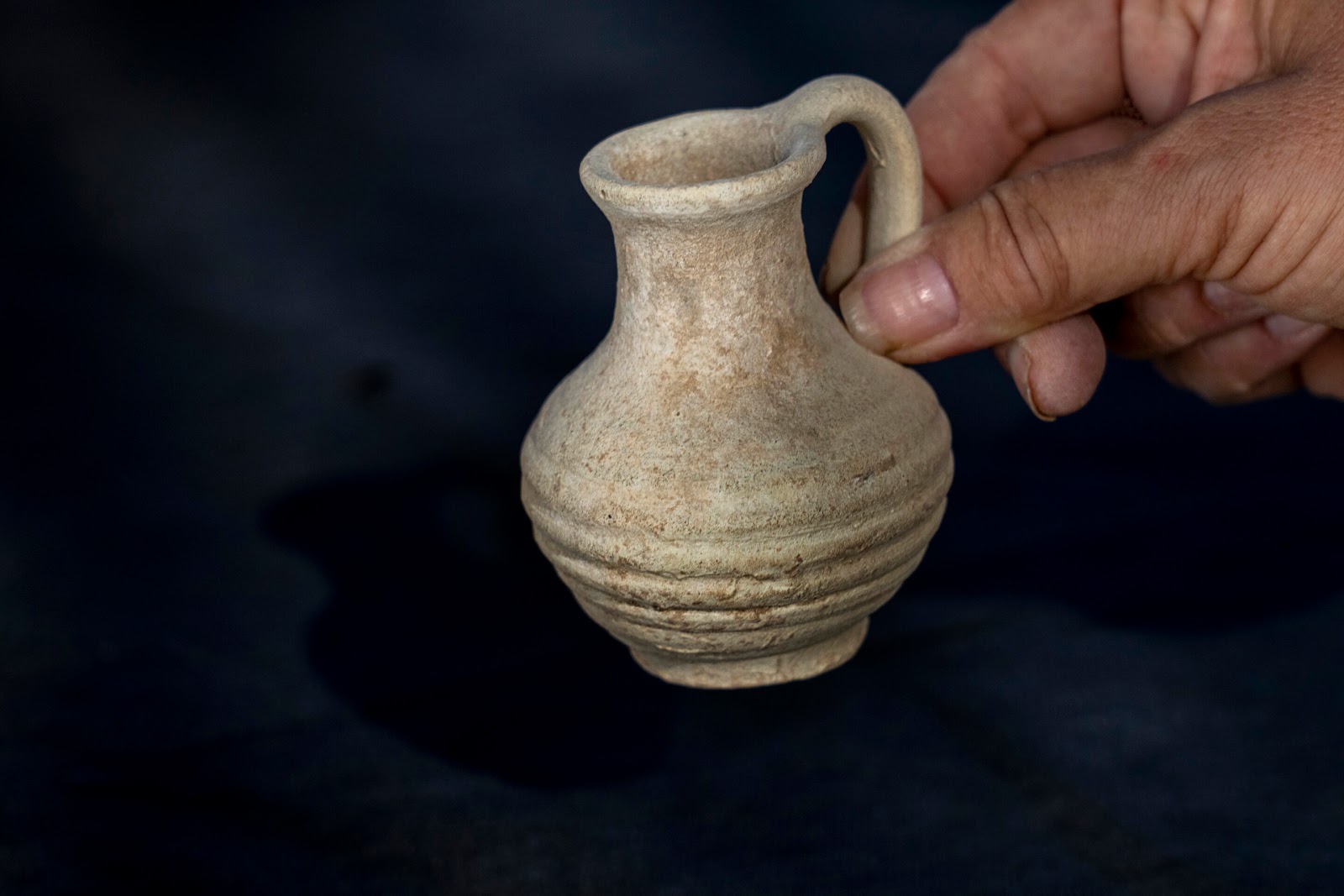Workers are seen on a 1,200-year-old rural estate, discovered during excavations by the Israel Antiquities Authority during expansion of the town of Rahat, Israel, Tuesday, Aug. 23, 2022. Located in Israel's south near the Bedouin town of Rahat, the building dates back back to the early Islamic period in the 8th or 9th centuries.
Credit: AP Photo/Tsafrir Abayov
The discovery in the Bedouin town of Rahat dates to the early Islamic period in the 8th or 9th century, the authority said.
The luxury home is built around a courtyard and features four wings with several rooms for its residents. One lavish section features a marble hallway with stone floors and elaborate wall decorations. Archaeologists also found shards of decorated glass serving dishes.
Underneath the courtyard, archaeologists were surprised to discover subterranean vaults made of stone, which they believe were used to store items at cooler temperatures away from the scorching desert sun. The vaults appear to be carefully constructed and sturdy enough to allow people to move between them underground. An opening from the vaulted rooms also leads to a cistern where residents could access cool drinking water.
A man stands at the edge of a 1,200-year-old rural estate discovered during excavations by the Israel Antiquities Authority during expansion of the town of Rahat, Israel, Tuesday, Aug. 23, 2022. Located in Israel's south near the Bedouin town of Rahat, the building dates back back to the early Islamic period in the 8th or 9th centuries.
Credit: AP Photo/Tsafrir Abayov
A worker is seen on a 1,200-year-old rural estate discovered during excavations by the Israel Antiquities Authority during expansion of the town of Rahat, Israel, Tuesday, Aug. 23, 2022. Located in Israel's south near the Bedouin town of Rahat, the building dates back back to the early Islamic period in the 8th or 9th centuries.
Credit: AP Photo/Tsafrir Abayov
Workers are seen on a 1,200-year-old rural estate, discovered during excavations by the Israel Antiquities Authority during expansion of the town of Rahat, Israel, Tuesday, Aug. 23, 2022. Located in Israel's south near the Bedouin town of Rahat, the building dates back back to the early Islamic period in the 8th or 9th centuries.
Credit: AP Photo/Tsafrir Abayov
An artifact is displayed from a 1,200-year-old rural estate discovered during excavations by the Israel Antiquities Authority during expansion of the town of Rahat, Israel, Tuesday, Aug. 23, 2022. Located in Israel's south near the Bedouin town of Rahat, the building dates back back to the early Islamic period in the 8th or 9th centuries.
Credit: AP Photo/Tsafrir Abayov
A woman holds a vessel from a 1,200-year-old rural estate discovered during excavations by the Israel Antiquities Authority during expansion of the town of Rahat, Israel, Tuesday, Aug. 23, 2022. Located in Israel's south near the Bedouin town of Rahat, the building dates back back to the early Islamic period in the 8th or 9th centuries.
Credit: AP Photo/Tsafrir Abayov
An artifact is displayed from a 1,200-year-old rural estate discovered during excavations by the Israel Antiquities Authority during expansion of the town of Rahat, Israel, Tuesday, Aug. 23, 2022. Located in Israel's south near the Bedouin town of Rahat, the building dates back back to the early Islamic period in the 8th or 9th centuries.
Credit: AP Photo/Tsafrir Abayov
Workers are seen on a 1,200-year-old rural estate discovered during excavations by the Israel Antiquities Authority during expansion of the town of Rahat, Israel, Tuesday, Aug. 23, 2022. Located in Israel's south near the Bedouin town of Rahat, the building dates back back to the early Islamic period in the 8th or 9th centuries.
Credit: AP Photo/Tsafrir Abayov
Credit: AP Photo/Tsafrir Abayov
Workers are seen on a 1,200-year-old rural estate discovered during excavations by the Israel Antiquities Authority during expansion of the town of Rahat, Israel, Tuesday, Aug. 23, 2022. Located in Israel's south near the Bedouin town of Rahat, the building dates back back to the early Islamic period in the 8th or 9th centuries.
Credit: AP Photo/Tsafrir Abayov
Experts say the mansion's owners likely lived a life of prosperity and had plenty to go around.
"The luxurious estate and the unique impressive underground vaults are evidence of the owners' means," said the excavation directors in a statement. "Their high status and wealth allowed them to build a luxurious mansion that served as a residence and for entertaining."
Recommend this post and follow
The birth of modern Man











No comments:
Post a Comment
Stick to the subject, NO religion, or Party politics